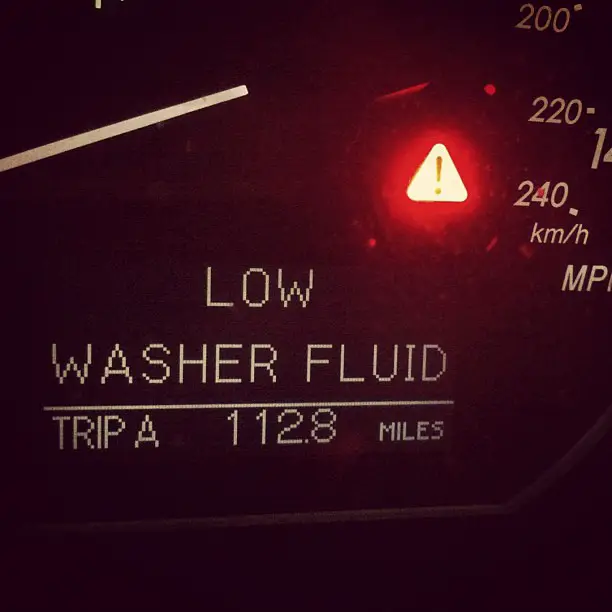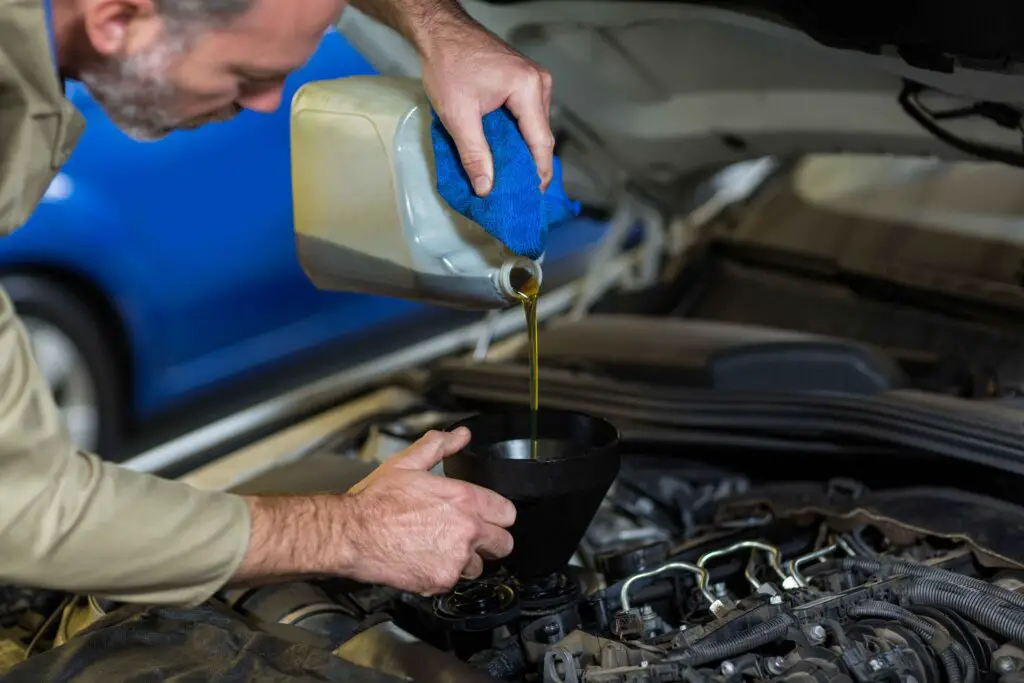
a client handing over car key to a trusted mechanic
The flashing odometer reminds you—you’ve hit the 50,000-mile mark. This critical maintenance milestone can sneak up on busy drivers.
But neglecting service at this interval risks expensive repairs and breakdowns.
Don’t take your car for granted. Use this 50,000-mile maintenance guide to prepare for essential upkeep that keeps your vehicle running dependably for years beyond this mileage.
Preventative maintenance at 50,000 miles helps avoid problems that lead to major repairs. It also provides peace of mind that your vehicle will safely and reliably handle daily driving demands.
From fluid changes to component replacement, this is your chance to address wear before it causes breakdowns.
Follow the recommended factory schedules and tips to maximize performance. Your car’s long-term health depends on diligent upkeep at 50,000 miles.
Contents
What is 50,000 miles car maintenance?
A 50,000-mile car maintenance is a comprehensive check-up that typically involves inspecting and possibly replacing certain parts of the vehicle. This may include changing the brake pads if they are worn out, replacing the fuel filter, and changing the automatic transmission fluid.
The vehicle’s exhaust system, muffler, catalytic converter, and suspension components are also inspected for any wear and tear.
This maintenance service is crucial for ensuring the vehicle’s optimal performance and longevity.
Please note that the specifics can vary based on the vehicle’s make and model. Always refer to the vehicle’s owner’s manual for the most accurate information.
Why 50,000 Miles car Maintenance Matters
Reaching 50,000 miles means it’s time to take your car in for some important preventative maintenance. This service interval helps keep your vehicle running safely and reliably. Pay attention! Here is the juice!
Fluids
Fresh fluids at 50,000 miles help flush out contaminants and replenish additives.
- Oil and filter change: old oil breaks down over time, losing its lubricating properties. Regular oil and filter changes are vital maintenance tasks to ensure a well-functioning engine. That is why conventional oil should be changed every 3,000 to 5,000 miles, while synthetic oil can last up to 7,500 to 10,000 miles.
- Coolant flush: Coolant degrades and becomes acidic over time, leading to corrosion and clogs. A flush cleans the system of old coolant and replaces it with new, protecting the radiator, hoses and engine. The purpose of this is to rid your engine of any old fluid, dirt, debris or rust so your cooling system functions as it should.
- Transmission fluid change: old transmission fluid lacks the proper viscosity and lubricating properties to protect gears. New fluid prevents transmission slippage, noisy operation, and premature failure. It is recommended between every 50,000 and 100,000 miles for automatic transmission and 30,000 and 60,000 miles for manual transmission.
- Brake fluid flush: Brake fluid absorbs moisture over time, leading to a lower boiling point and reduced braking power. Fresh fluid provides better compression and a higher boiling point for safer braking. It is safe to perform this task to avoid corrosion in the metallic components of the brake system.
- Power steering fluid flush: Fluid breaks down from heat and friction, causing loss of power steering assist. A flush cleans out contaminated fluid for quieter and easier steering. Ensure you turn the steering a few more times and check the fluid level before going out.
- Fuel injection service: clean fuel injectors, combustion chambers and intake valves. Removes deposits, improving power, economy and emissions. At 50,000 miles, this is needed for a responsive driving experience.
- Coolant level/condition check: top off if low. Test the coolant protection level and pH to ensure proper concentration and condition. Prevents overheating.
Filters
Replacing dirty filters improves performance.
- Air filter: A clogged air cleaner restricts airflow to the engine, reducing power and fuel economy. Replacements restore engine breathing and performance.
- Cabin air filter: prevents pollen, dust and debris from entering the vehicle interior. Reduces allergens and musty odors.
- Fuel filter: captures contaminants from fuel supply. If clogged, it can cause hard starting and stalling. Replacement filters out dirt for a clean fuel supply.
Ignition System
Tune-ups restore engine performance.
- Spark plug replacement: old plugs have worn electrodes, resulting in misfires, poor combustion and power loss. New plugs ensure proper firing and optimal performance.
- Inspect wires, coils, distributor cap and rotors, if applicable. Cracked wires or damaged ignition components lead to misfires. A replacement eliminates electrical resistance for a strong spark.
Engine Components
Inspecting key components identifies potential problems.
- Clean throttle body and throttle valve: removes dirt buildup causing poor throttle response and drivability issues. Restores engine performance.
- Fuel injection cleaning service: cleans fuel injectors, intake valves and combustion chambers. Removes deposits for better efficiency and response.
- Check accessory belt condition. Cracked belts slip and fail to turn components like the alternator. New belts prevent breakdowns.
- Check and replace any worn hoses – Brittle, bulging or cracked hoses can leak or burst. New hoses prevent overheating and roadside emergencies.
Drivetrain
The drivetrain transfers power to the wheels.
- Inspect CV joints and boots. Torn boots lead to joint failure, causing vibration and noise. New boots and joints prevent catastrophic failure while driving.
- Check for leaks near drive shafts. Identify seal leaks before output shaft bearings fail. Prevents damage and repairs.
- Manual: check clutch fluid and condition. Low fluid levels reduce hydraulic system pressure. Inspects for leaks and smooth clutch operation.
Tires and Wheels
Rolling smoothly prevents uneven wear.
- Tire rotation and balance: rotations spread the wear pattern across the tire tread evenly. Balance compensates for weight variances to prevent vibration.
- Wheel alignment inspection: checks and adjusts alignment angles. Reduces tire wear and improves handling and control.
- Tire tread depth inspection: measuring the remaining tread. Worn tread increases the risk of punctures, blowouts and hydroplaning.
- Check tire pressure. Underinflation causes uneven wear and poor handling. Proper inflation extends tire life and fuel economy.
Rotations and alignment keep tires wearing evenly. Proper inflation and tread reduce the chances of a blowout.
Brakes

Stopping safely is a priority; if your life matters, your brakes matter most.
- Inspect brake pads, rotors, and calipers. Worn pads or rotors reduce stopping power. Caliper slide pins should move freely. Replacements maintain braking performance.
- Check brake fluid level and condition: Low fluid levels reduce braking ability. Moisture-contaminated fluid lowers the boiling point and could vaporize under hard braking.
Quality brake components and fluids prevent damage during emergency stops.
Battery
A weak battery leaves you stranded.
- Load test battery: tests actual cranking power and capacity. Determines if battery needs replacement due to the imminent failure risk.
- Clean connections: corrosion on terminals increases electrical resistance, potentially preventing starting. Cleaning preserves optimal current flow.
- Check age and consider replacement. The average battery life is 3–5 years. Old batteries are prone to failure and have a lower charge capacity.
Load testing identifies batteries nearing the end of their lifespan.
Safety and Visibility
Seeing and being seen avoid accidents.
- Headlight aim check: improperly aimed lights reduce visibility and blind oncoming traffic. Aiming to preserve nighttime visibility.
- Replace wiper blades if worn. Torn or hardened blades streak and obstruct vision in inclement weather. New blades provide clear visibility. also check the wiper washer fluid.
- Check all exterior lights. Burned-out bulbs increase the risk of collisions or traffic stops. Replacement ensures proper illumination at night.
Properly-aimed headlights illuminate the road. New wiper blades and functional lights keep you safe in hazardous conditions.
Inspections
Thorough inspections catch small problems before they become big ones.
- Check suspension components: worn shocks, struts, and ball joints degrade handling and control. Identifies loose or damaged parts needing replacement before failure.
- Inspect steering linkage: check tie rods, steering racks, and power steering lines and hoses. Ensures responsive, managed steering, preventing accidents.
- Check the chassis and undercarriage. Look for corrosion and collision damage. Inspect the fuel/exhaust system for leaks. Identify issues before breakdown.
- Check all hoses, belts, and gaskets. Engine hoses, accessory belts, and seals are prone to cracking. Replacement prevents leaks/breakage and overheating.
- Lubricate locks, latches, and hinges. Lubricate prevents seizing and freezing in extreme cold. Allows smooth access and operation of doors and hoods.
Periodic inspections identify worn parts for replacement before failure strands you on the side of the road.
DIY vs Professional Service
Some 50,000-mile car maintenance items you can do yourself:
- Oil and air filter changes
- Battery testing
- Tire rotation
However, many items require a professional mechanic:
- Transmission, coolant, and brake fluid flushes
- Suspension, alignment, and steering inspections
- Spark plug replacement
- Headlight aim adjustment
- Diagnostic computer scans
DIYers need to be aware of proper fluid disposal laws and have access to diagnostic tools to fully evaluate components. For example, a simple visual brake inspection won’t reveal if pads are still thick enough.
Specialized tools are needed to measure pad thickness and rotor condition. Without the proper equipment and know-how, DIYers may incorrectly assume components are still in good shape when they need replacement.
Professional technicians have extensive training and experience to spot issues that a basic inspection could miss. Their expertise allows them to identify problems and required repairs that an untrained car owner may overlook.
Paying their labor fees is often worth it to avoid extra repairs later on caused by improper or incomplete maintenance
Resetting engine codes, performing calibrations and alignments, and servicing new complex components require capabilities beyond what most DIYers have access to.
Leaving complicated maintenance to qualified mechanics gives you peace of mind that the work will be done properly.
Estimated 50,000 Miles Maintenance Costs
| Maintenance Item | Estimated Repair Cost* |
|---|---|
| Oil Change | $40 |
| Air Filter | $15-25 |
| Spark Plugs | $200 |
| Transmission Fluid Change | $90-150 |
| Coolant Flush | $120-180 |
| Brake Pads | $130-250 |
| Fuel Injection Service | $120-180 |
| *Costs are approximate averages for a standard sedan; SUVs and trucks may be higher. Costs can vary by location. |
Budgeting $600-$1,200 for your 50,000-mile maintenance provides a buffer for any additional items found during inspection. Breaking up services between 50k and 60k mile intervals can help spread costs out.
Tips for Your 50,000-Mile Service Appointment
- Ask for OEM or manufacturer-recommended parts to ensure quality and fit.
- Read reviews and ask for references to find a reputable shop or mechanic.
- Request they top off any fluids that are not due for a flush.
- Have them inspect the exhaust, battery, lights, wipers, etc.
- Ask for a service checklist with old or new parts noted.
- Save maintenance records and shop invoices to document service for potential buyers.
- Address any additional recommended repairs right away to avoid bigger issues.

Conclusion
You’ve reached the halfway point of 100,000 miles! Congratulations!
But don’t get too comfortable; your vehicle still needs your care and attention to keep running smoothly. Follow the preventative maintenance tips in this article and check your owner’s manual for any specific recommendations for your model. If you’re not sure how to do something, leave it to the professionals and find a reliable service technician near you.
Now that you know what to do at 50,000 miles, we want to hear from you.
How do you keep your vehicle in top condition?




Leave a Reply